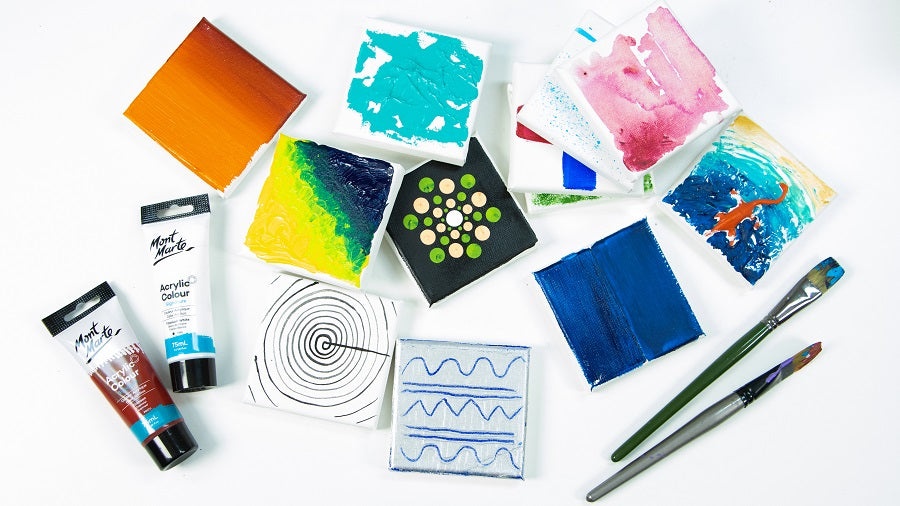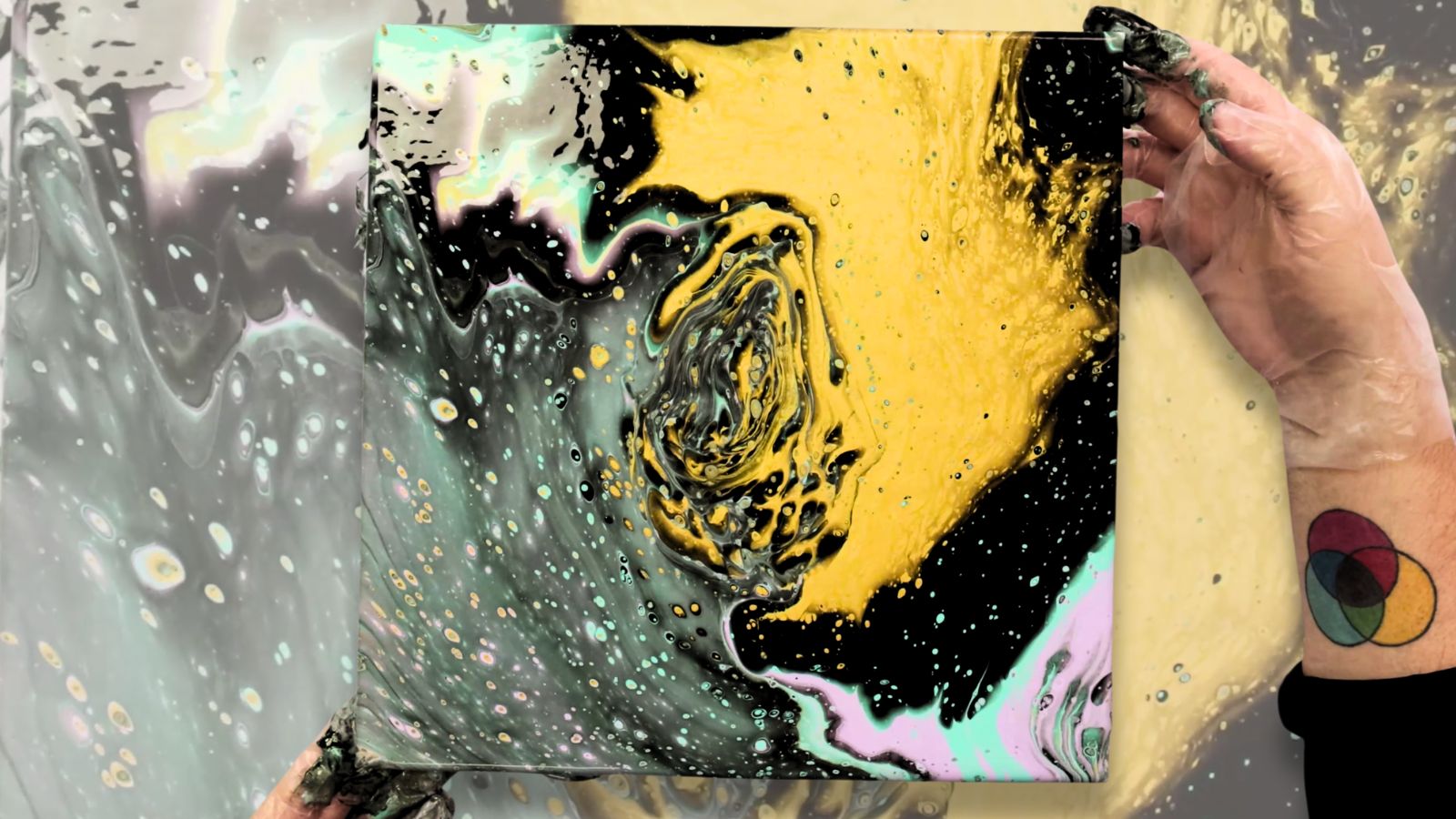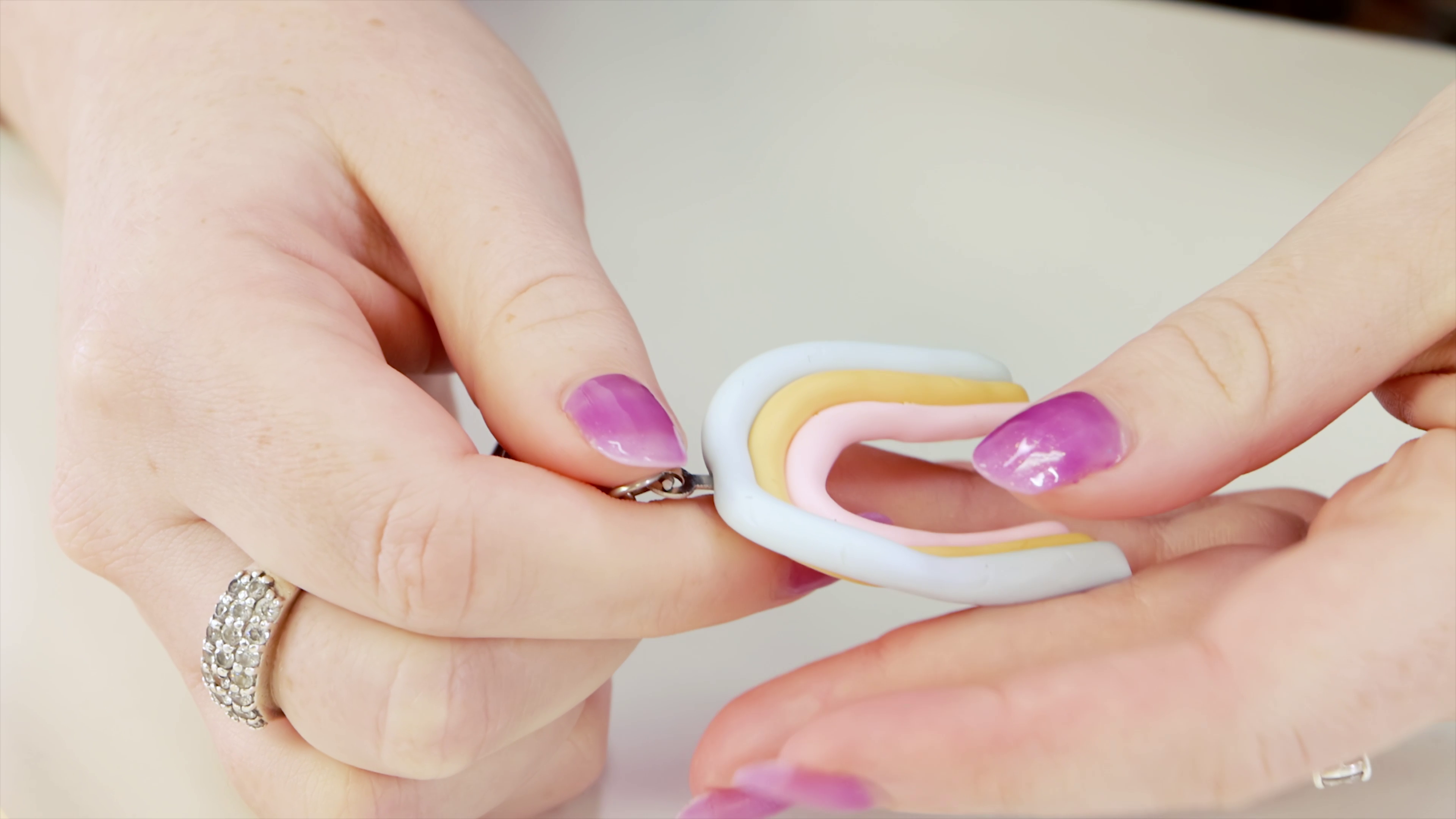Level up your acrylic painting game with some (or all) of these 29 acrylic painting techniques.
1. Dry brush
A dry brush painting technique is great for creating textures or atmospheric effects such as clouds and mist. Dry brushing is done by dipping your paint brush in paint and wiping off most of it so that you only have a small amount left on the bristles. Next, you’ll lightly sweep your brush across the surface to create a transparent layer of paint.
2. Drips and splatters
Are you ready to have a bit of fun? Splatters and drips are used by a lot of abstract painters to add some extra interest or texture to their work. To create this effect, add a touch of water to your paints and flick or drip it onto your page using a paint brush.
3. Light dabbing with a sponge
A sponge can come in handy for quite a few different painting techniques. One of these is to put a small amount of paint on your sponge and lightly dab it onto the surface. This is great for backgrounds or for lightly filling in areas with patches of colour.
4. Thick dabbing with a sponge
Thick dabbing is essentially the same as light dabbing but you’ll use a little more paint and will press harder. This will create brighter colours and will add a bit of texture to your painting if you’re using a heavy bodied acrylic that will hold its shape once it dries.
5. Watercolour effects
If you add a bit of water to your sponge or paints this will create a different effect again. You’ll notice this acrylic painting technique will make your paints slightly translucent, giving them a watercolour effect that also spreads easily. Once dry, you can build layers without reactivating the paint underneath.
6. Scumbling
For this technique, use a dry brush and small amount of paint to apply loose brush strokes over the top of your background. Like dry brushing, scumbling is great for creating clouds and foliage.
7. Thick colour gradients
Create a rough transition between colours using thick paint strokes. The best way to achieve thick colour gradients is to use a paint brush or palette knife with a heavy bodied acrylic paint like our Dimension Acrylic.
8. Smooth fade
Smooth fade or smooth colour transitions can be created by painting one colour onto your page and adding another on top, moving out from the edge. Since acrylic paint is fast-drying, you’ll need to work quickly to make sure both colours are still wet enough to blend together.
9. Palette knife colour fade
Usually paired with a gradient background, dab thick acrylic dots onto the canvas with the base of your palette knife. Make the dots larger and give them shape with short brush strokes. You can create your colour fade by starting with darker colours and lightening the colour of the dots more and more as you reach the bottom of the canvas.
10. Palette knife
Palette knife painting brings a lot of texture to your canvas. Use a heavy-bodied acrylic paint and apply it to the canvas with a palette knife, spreading it out without thinning it so that it creates a 3D effect. Feel free to dab the paint with the base of the knife to create more texture.
11. Stencilling
You can make your own stencils by using a hobby knife to cut a shape out of a sheet of paper, cardboard or plastic. Before you start painting, you might like to secure the stencil to your surface using painter’s tape to make sure it doesn’t move around. Next, use a stencil brush or sponge to apply paint to your stencil.
12. Glazing
Glazing is where you lay a transparent or semi-transparent layer of paint over a dry coat of paint. This painting technique can be used to adjust or enhance colours without losing the layers underneath, as well as creating effects such as rays of light, water and glass.
13. Dot art
To create dot art, you can use the end of a paint brush or another tool to apply dots of paint to an artwork. You can do this by dipping your tool in the paint and dotting it onto your surface.
14. Sgraffito
Sgraffito is often used in pottery, but can also be applied to acrylic painting. To do this, paint your surface and let it dry, then paint a thick layer over the top and scratch into it while it’s still wet using the end of a paint brush or tool.
15. Pour painting
Pouring paints are an acrylic paint that has been mixed with a pouring medium to increase their flow. This allows you to move the paint across the surface by tilting it in different directions. There are loads of different pouring paint techniques out there that you can try including flip cup, puddle pour and more.
16. Chain pull painting
There are quite a few different methods you can use to create a string pull painting. In our video tutorial, we used chain and converted acrylic paints into pouring paints using a mix of medium, PVA glue and water. We then covered a canvas in white paint, dipped the chain in a coloured paint and dragged it across the surface. Check out the video above if you’d like to see this fluid art technique in action.
17. Wet on wet
As you might have guessed by the name, this simple technique is achieved by painting wet paint on wet paint. This can create interesting blending effects, textures and layers in your painting.
18. Crumpled newspaper
We love using everyday items to add interesting effects in paintings. Using crumpled newspaper is a great way to add interesting patterns to your work and is also a fun one for the kids to try! Scrunch up your newspaper, dip it in paint (like a sponge) and dab the excess off on your palette or a scrap piece of paper. Next, dab the scrunched-up newspaper onto your painting wherever you want to add some texture.
19. Cling wrap
Did you know that you can create fascinating textures in your artworks using cling wrap? Paint your canvas and let it dry, then lay a second colour over the top and cover it with cling wrap while it’s still wet. You can wrinkle it as much as you want depending on how much texture you want to create. Once the paint has dried, peel the cling wrap off to reveal the effect!
20. Bubble Wrap
This acrylic painting process is great for the kids. Simple use a brush to gently add acrylic paint onto your bubble wrap, making sure to only cover the bubbles. Then, press the bubble wrap onto the canvas to spread the paint. Feel free to repeat the process with as many colours as you like, but the more you add the more blurred the result will be.
21. Add acrylic paint markers
Acrylic paint markers are perfect for adding details and patterns to your artworks. Wait until the paint is dry and then draw anything you like over the top. It’s the perfect detailing hack!
22. Layering
There are a lot of layering techniques you can try with acrylic paints. One of these is to mix acrylic medium with the colours you’ll use for the top layer. This will make them semi-transparent so that you can see the paint and textures underneath.
23. Gel medium – Gloss and matte medium
If you want to change the texture or finish of your paints you can add gloss or matte medium. As the names suggest, these will either make your paints glossier or more matte once they’re dry.
24. Masking
Masking is where you apply tape to the areas that you don’t want to be painted. Once you’ve laid down the tape, use a soft flat brush to paint over it and then remove the tape while the paint is still wet.
25. Use modelling paste
Do you want to add more texture to your artwork? A modelling paste helps you create texture on a range of surfaces, so that the backgrounds of your acrylic paintings can be brought to life. You can use the paste on its own or embed small objects to create a 3D effect.
26. Fine details
Many art styles, especially realistic, focus on the finer details. Add a small amount of acrylic paint to a fine or liner brush to help add more details, patterns or intricate designs to your piece.
27. Impasto
Impasto painting is where you apply thick paint to your surface using a palette knife or paint brush. This often creates a 3D effect as the paint sits high on the canvas. The best way to create this technique is to use a heavy-bodied acrylic or to mix some impasto medium in with your paints.
28. Stamping
Like ink, you can also use acrylic paint to accomplish a stamping method. This is where you would use any paint brush to spread acrylic paint onto your stamp design, so that when you press the stamp onto your desired surface, the paint volume and shape is controlled.
29. Hard and soft brush strokes
The pressure in your brush stokes make a big difference to your overall result. Soft strokes have less colour opacity, while harder strokes fill up more colour on the page. Harder strokes usually draw more attention, while soft can help to create a natural blur.
Which one is your favourite technique? If you followed these tips, we’d love to see what you made! Show us by tagging @montmarteart on Facebook and Instagram.



































